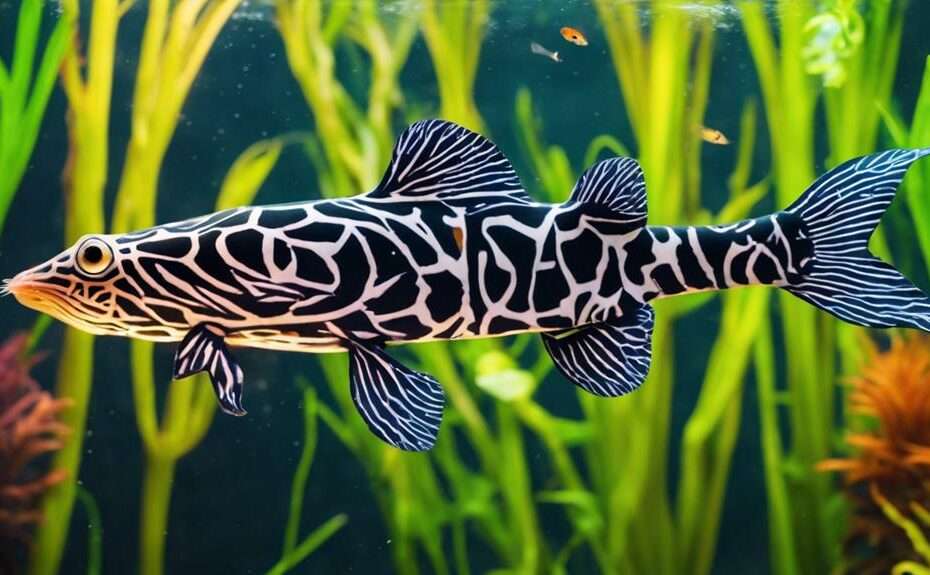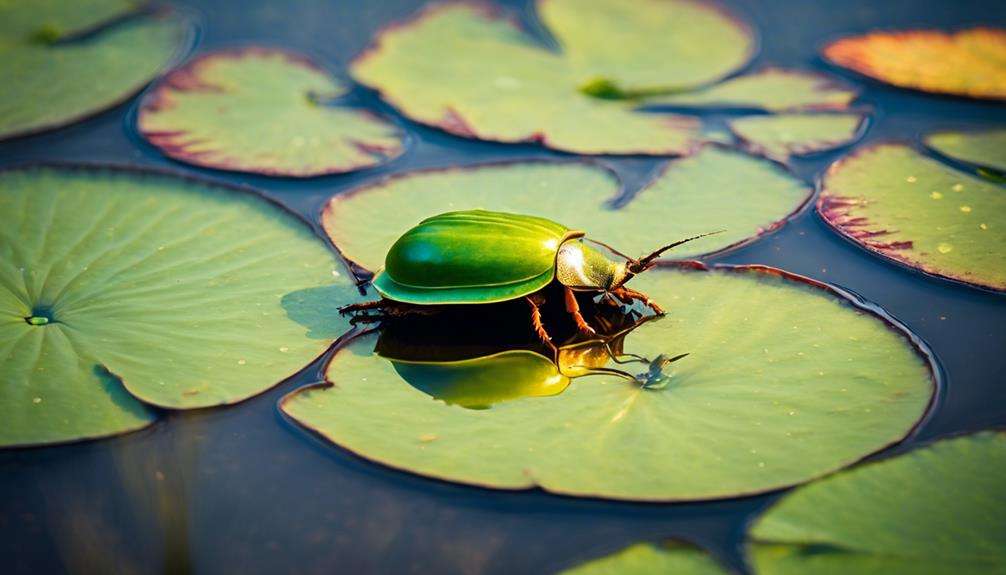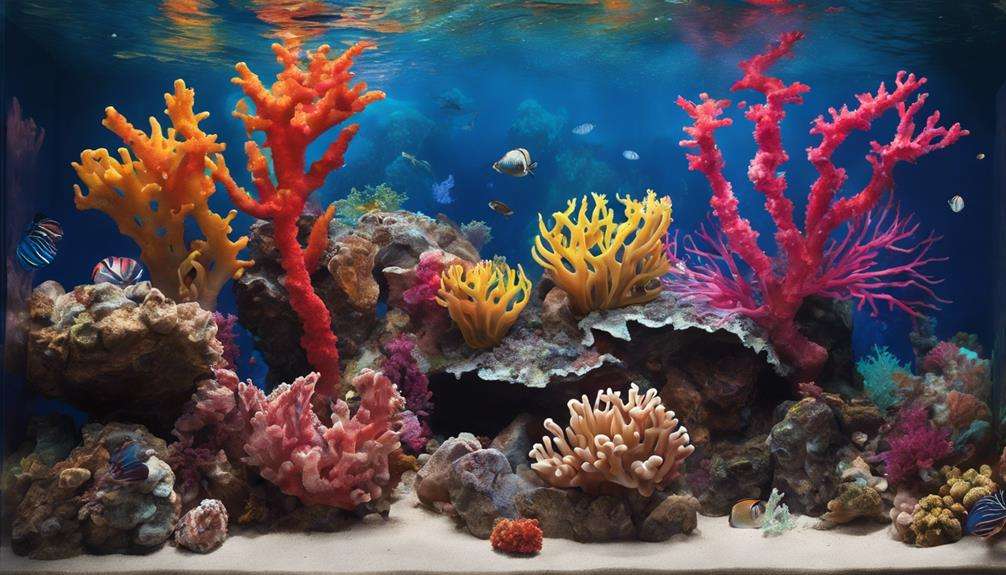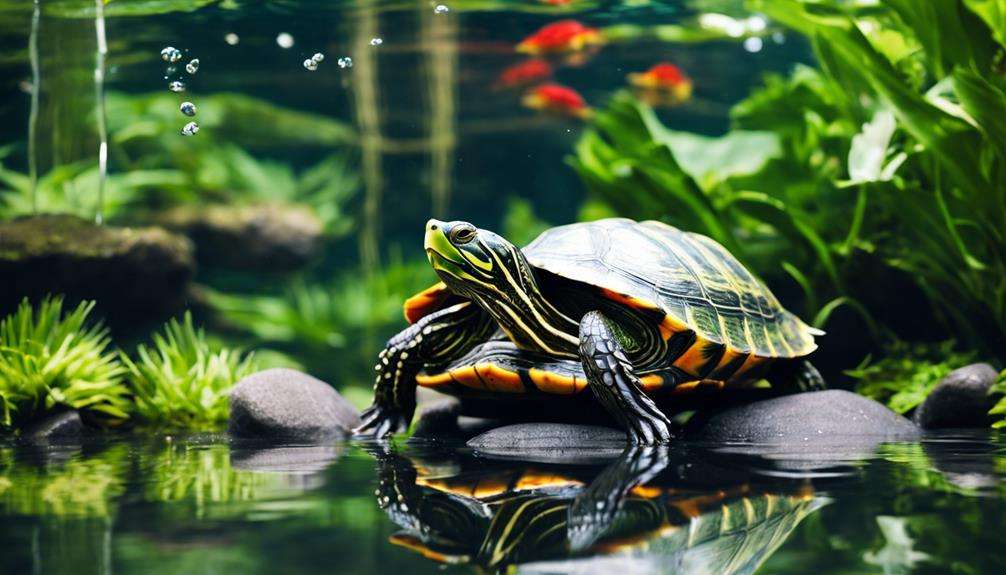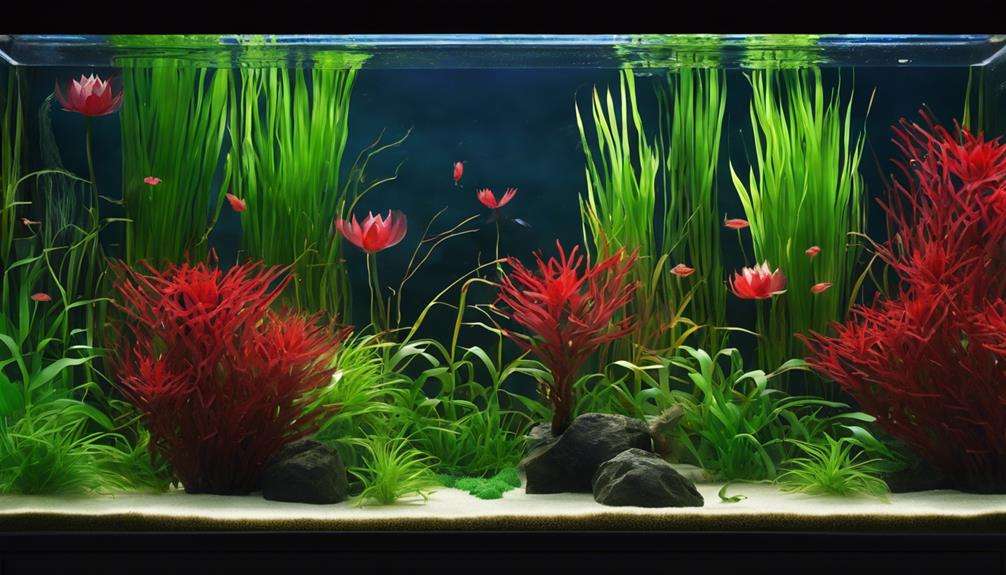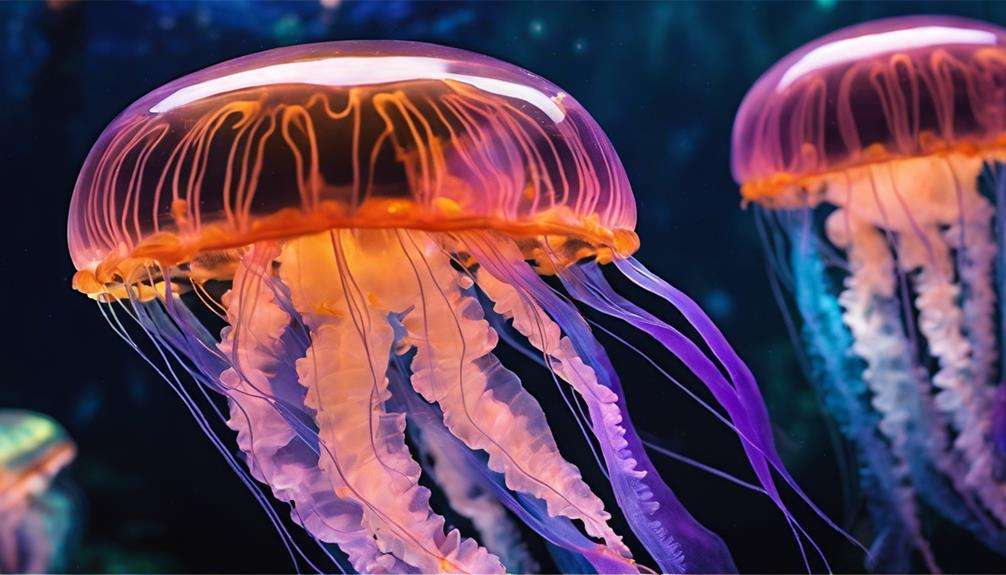Did you know that there are catfish species with quirky traits that can add a unique touch to your aquarium?
From the playful Panda Cory to the mysterious Suckermouth Catfish, each species brings its own charm to the underwater world.
Discover the fascinating features and behaviors of these catfish that make them perfect companions for aquarists seeking something out of the ordinary.
Key Takeaways
- Pictus, Upside-Down, and Bristlenose catfish offer unique traits and behaviors for diverse aquarium experiences.
- Quirky feeding habits and social behaviors make these catfish species fascinating additions to well-maintained tanks.
- Three Stripe and Julii Cory catfish bring beauty, social interactions, and playful dynamics to aquarium environments.
- Catering to their specific tank requirements ensures the longevity and vibrancy of these catfish species in aquatic settings.
Unique Characteristics of Pictus Catfish
With their distinctive long barbels and active bottom-dwelling behavior, Pictus Catfish stand out as an alluring addition to aquariums for aquarists seeking unique aquatic companions. These catfish, typically reaching lengths of up to 5 inches, sport a striking appearance with a light gray base color adorned with black or dark gray spots. As natural omnivores, Pictus Catfish require a balanced diet that includes a protein source to thrive in captivity.
Regarding lifespan, these catfish can live for 8 to 10 years, making them a long-term commitment for aquarists. Their preference for interacting at the bottom of aquariums adds an active dimension to the tank environment. Observing Pictus Catfish as they navigate their surroundings and engage with tank mates can provide aquarists with endless fascination. When considering unique characteristics for your aquarium, the active nature, distinctive appearance, and bottom-dwelling behavior of Pictus Catfish make them an enchanting choice.
Quirky Behavior of Upside-Down Catfish
Upside-Down Catfish exhibit a fascinating behavior of swimming upside down as they scour for algae on the tank's surfaces. This unique feeding habit sets them apart in the aquarium world.
Observing their social interactions and specialized feeding techniques can provide aquarists with a glimpse into the intriguing behaviors of these quirky catfish.
Unique Feeding Habits
In their natural habitat, the Upside-Down Catfish exhibit a unique feeding behavior, swimming upside down to access algae on the undersides of leaves and rocks. This quirky behavior allows them to efficiently forage for food, a trait that captivates aquarists when observing them in aquariums.
To replicate their natural environment, provide planted tanks with ample hiding spots for these catfish. It's vital to maintain a tank size of at least 30 gallons with a temperature range between 72-82 degrees Fahrenheit to guarantee the well-being of Upside-Down Catfish.
Observing these catfish display their distinctive upside-down swimming behavior while feeding on algae can offer a fascinating and educational experience for aquarists.
Social Behaviors Displayed
What social behaviors distinguish the quirky nature of the Upside-Down Catfish in aquarium settings?
The Upside-Down Catfish exhibits a peculiar social behavior by swimming upside down, a unique trait among fish species.
In captivity, they showcase specialized feeding habits by consuming algae from the undersides of leaves and rocks.
These catfish, growing to 3-4 inches in size and adorned with distinctive brown and tan splotches, prefer thriving in a 30-gallon tank with temperatures ranging from 72-82 degrees Fahrenheit.
Their affinity for densely planted aquariums mirrors their natural habitat, where they display social behaviors by seeking shelter and interacting with other fish.
Understanding these social tendencies enhances the overall care and wellbeing of Upside-Down Catfish in aquarium environments.
Endearing Traits of Bandit Cory
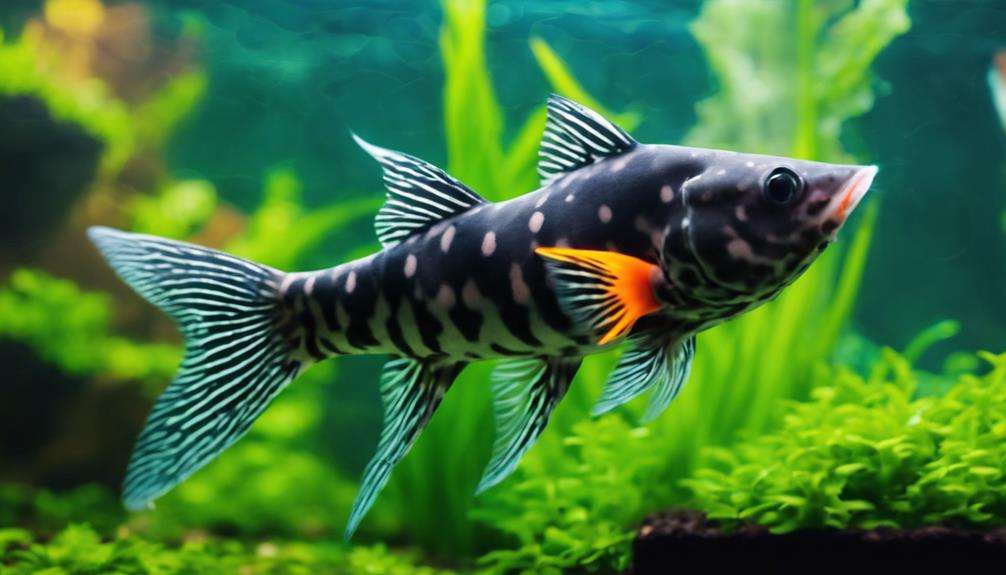
Bandit Cory catfish exhibit fascinating behavior by forming tight-knit groups and actively scavenging for food in the substrate of your aquarium.
Understanding the natural habitat of Bandit Cory is essential for recreating a suitable environment that mimics their preferred conditions.
Bandit Cory Behavior
Known for their endearing behavior in groups, the Bandit Cory catfish (Corydoras metae) display playful interactions with tankmates and are active scavengers in well-maintained aquariums. These small, peaceful bottom dwellers exhibit a lively nature, often seen darting around the tank in search of food.
Bandit Cory catfish engage in scavenging activities, helping to keep the aquarium substrate clean. Their playful interactions with other fish add a charming dynamic to community tanks. In ideal conditions, these active catfish can live for around 5 years.
Providing a suitable environment with plenty of hiding spots and soft, sandy substrate mimicking their natural habitat encourages the Bandit Cory to display its full range of engaging behaviors.
Bandit Cory Habitat
Originating from the Meta River in Colombia, the Bandit Cory catfish's habitat preferences reflect their endearing traits and specific needs for thriving in aquarium environments. These small catfish, reaching around 2 inches in size, prefer to be kept in groups to feel secure.
The distinct black mask over their eyes gives them a unique appearance, adding to their charm in community aquariums. Providing ample hiding spots in a well-decorated tank is essential for the Bandit Cory to exhibit natural behaviors and reduce stress.
With a lifespan of up to 5 years, these catfish make delightful additions to tanks, bringing both aesthetic appeal and social interactions to the aquatic environment.
Playful Nature of Panda Cory
With a penchant for exploration and playfulness, the Panda Cory catfish species adds an engaging dynamic to aquarium environments. These charming catfish are easily recognizable by their panda-like appearance, sporting a black 'mask' over their eyes, a white body, and distinct black spots, resembling the iconic bear.
Despite their small size, reaching about 2 inches in adulthood, Panda Cory catfish are big on personality. They're known to be peaceful and social creatures, thriving in groups within community tanks.
Their playful nature extends beyond mere aesthetics, as Panda Cory catfish are active swimmers and love to interact with their tank mates. Observing their antics as they dart around the aquarium in search of food or simply exploring their surroundings can be quite entertaining. Their lively behavior and engaging personalities make them a popular choice among aquarists looking to add some charm and activity to their aquatic setups.
Fascinating Facts About Bronze Cory
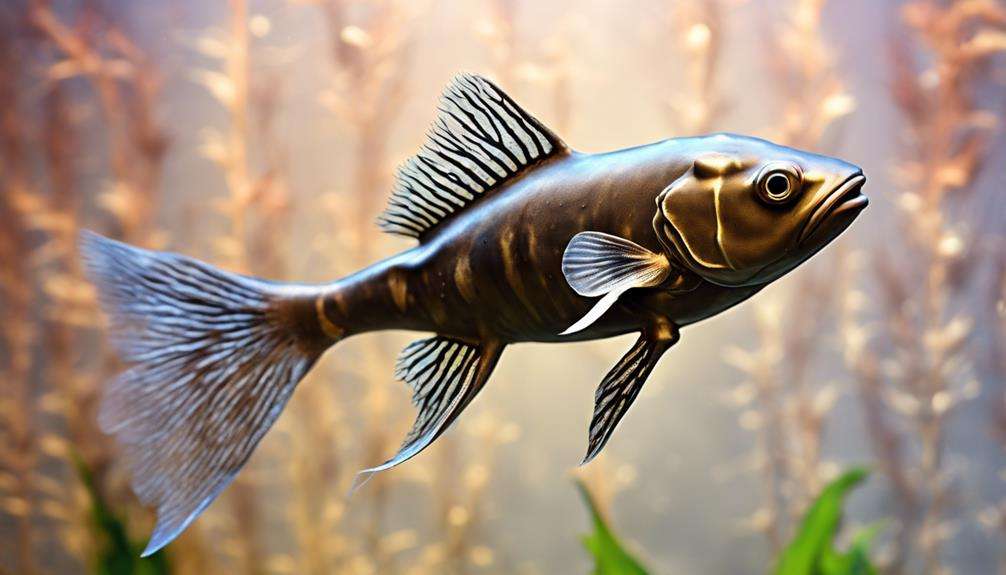
The Bronze Cory catfish species, recognized for its peaceful demeanor and compact size of 2.5 inches, is a fascinating addition to any aquarium setup. These catfish, scientifically known as Corydoras aeneus, exhibit a striking bronze or greenish coloration with a contrasting white underside, adding visual interest to your tank. With a lifespan of 5 to 10 years under proper care, Bronze Cory catfish prove to be long-term companions in your aquatic environment.
These catfish aren't only aesthetically pleasing but also serve a practical purpose as excellent scavengers. Their natural instinct to forage at the bottom of the aquarium helps in maintaining cleanliness by consuming leftover food and debris. Bronze Cory catfish are well-suited for community tanks, thriving in a well-planted environment that provides ample hiding spots for them to feel secure. Their easy care requirements make them an ideal choice for beginner aquarists, and observing their interesting behavior in a group setting adds a dynamic element to your underwater ecosystem.
Mysterious Qualities of Suckermouth Catfish
Revealing the mysterious essence of Suckermouth catfish, their distinct appearance and specialized mouth structure set them apart in the realm of aquarium fishkeeping.
Suckermouth catfish, commonly known as Plecostomus or Plecos, are valued for their algae-eating prowess, aiding in maintaining clean and balanced aquariums. Ranging from 3 inches to 2 feet, these catfish are adaptable to various tank sizes, making them versatile additions to aquatic environments.
With an impressive lifespan of 10 to 15 years, Suckermouth catfish prove to be enduring companions in well-cared-for tanks. Among the Suckermouth catfish species, the Bristlenose Pleco stands out for its peaceful nature and unique appearance, characterized by distinctive bristle-like growths on its head. This species not only contributes to algae control but also adds a touch of individuality to aquarium landscapes.
When considering Suckermouth catfish for your aquarium, their long-lived nature, algae-cleaning abilities, and tranquil demeanor make them intriguing options for aquarists seeking low-maintenance yet enthralling aquatic companions.
Intriguing Features of Three Stripe Cory
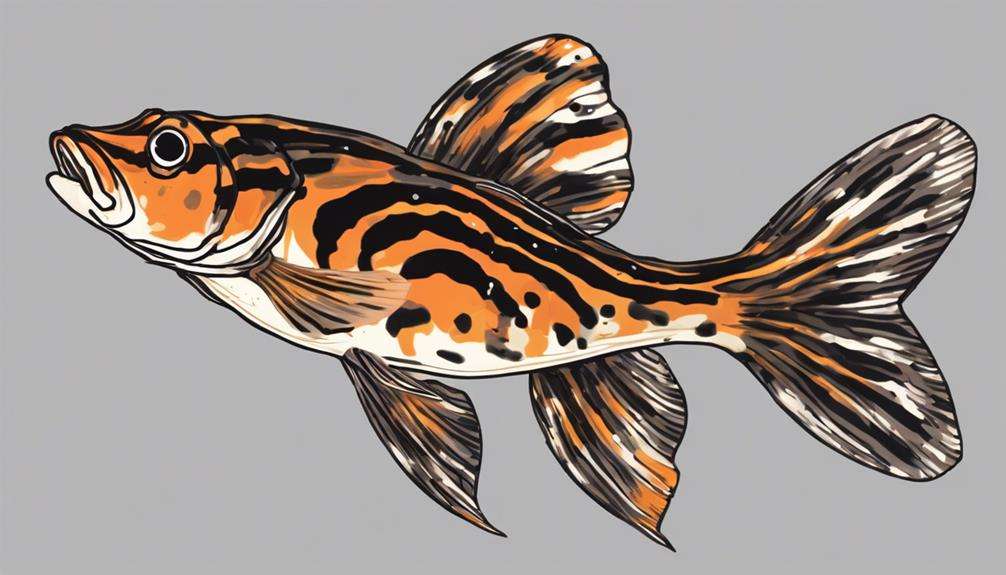
Indicative of its species, the Three Stripe Cory, also known as false julii cory or leopard cory, showcases distinct features that make it an alluring addition to aquariums. Belonging to the species Corydoras trilineatus, these catfish exhibit three bold black stripes running horizontally along their body, giving them a unique and striking appearance.
Growing to about 2.5 inches in length, Three Stripe Cory catfish are suitable for smaller aquarium setups. With a lifespan of up to 10 years, they're a long-term commitment for your aquatic environment. These peaceful bottom dwellers thrive when kept in small groups, preferring well-decorated tanks with hiding spots to retreat to.
When considering adding the Three Stripe Cory to your aquarium, remember to provide a suitable environment that mimics their natural habitat, ensuring they flourish and contribute to the beauty and diversity of your aquatic community.
Charming Aspects of Julii Cory
With their intricately patterned bodies resembling leopard spots, Julii Cory catfish captivate aquarists with their charming aspects. These catfish, scientifically known as Corydoras julii, exhibit beautifully intricate black markings that give them a unique and striking appearance in aquariums.
Julii Cory catfish aren't only visually appealing but also known for their peaceful and social nature, often thriving in groups of their own kind. Despite being relatively small, reaching sizes of around 2.5 inches when fully grown, these catfish make a significant impact with their playful and active behavior. Aquarists enjoy observing Julii Cory catfish as they explore their surroundings, interact with tank mates, and display their endearing personalities.
With a lifespan of about 5 years, these charming catfish bring both beauty and liveliness to any aquarium setting, making them a popular choice among hobbyists looking to add a touch of charm to their aquatic environment.
Frequently Asked Questions
Which Catfish Is Best for Aquarium?
For your aquarium, consider the Bristlenose Pleco as an ideal choice. With its small size, bushy tentacles, and peaceful nature, this catfish adds a unique touch to your tank while helping keep it clean.
Which Catfish Usually Kept in Aquarium?
Unique catfish, such as Corydoras, Plecostomus, Otocinclus, Synodontis, and Glass Catfish, are popular aquatic oddities in aquariums. These quirky bottom dwellers are colorful, playful swimmers, making them unconventional tankmates and funky underwater characters for aquarists.
What Is the Most Mischievous Fish?
Looking for the most mischievous fish? Clown Plecos are your prankster pets. These sneaky swimmers are masters of mysterious mischief. With their curious nature and playful antics, they're the troublemakers of the tank, always up to mischievous maneuvers.
Are Catfish Good for Tanks?
Catfish are great for tanks. They clean algae, leftover food, and have peaceful behavior with tank companions. Their quirky behavior like upside-down swimming adds fun. Consider size, decor, water quality, breeding, health, and handling for success.
Conclusion
You've now set off on a journey into the quirky world of catfish species for your aquarium. It's time to add a touch of whimsy and charm to your underwater ecosystem with the Pictus Catfish, Upside-Down Catfish, Bandit Cory, Panda Cory, Bronze Cory, Suckermouth Catfish, Three Stripe Cory, and Julii Cory.
Watch as these unique creatures bring life and personality to your tank, creating a scene straight out of a surreal underwater carnival. Enjoy the show!
